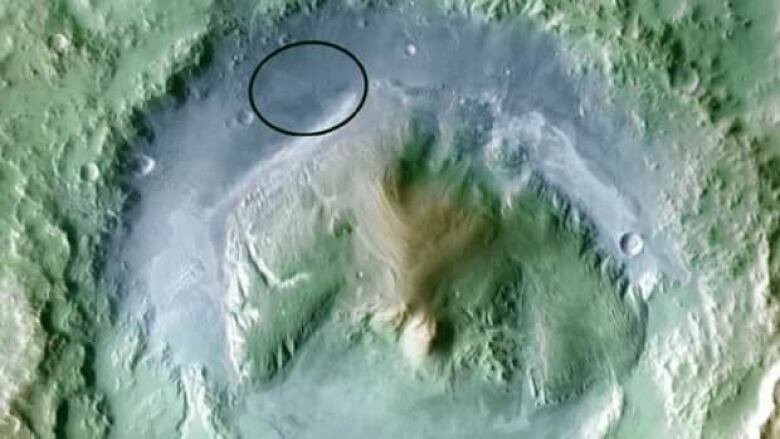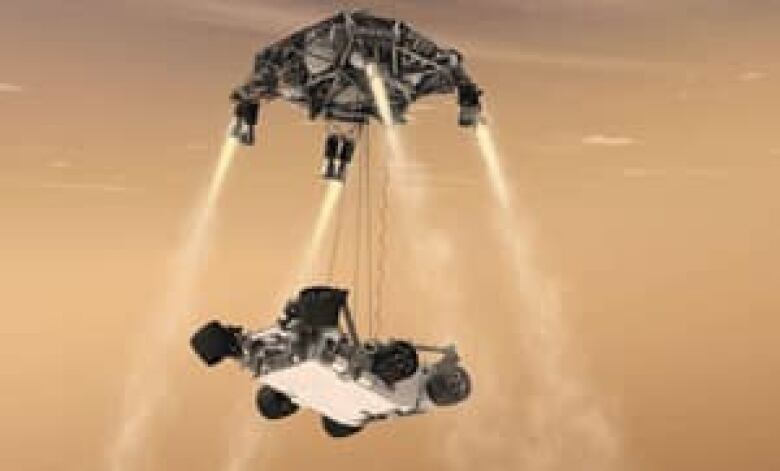How to watch the Mars rover landing

Excitement among space enthusiasts is growing as NASA prepares to land itsMars Science Laboratory robot Curiosityon the red planet this weekend.
The rover is expected totouch downon Mars at 1:31 a.m. ET Monday,and NASA will begin its coverage of the event at 11:30 p.m. ET Sunday.
It will be streaming the landing live from mission control atthe California Institute of Technology's Jet Propulsion Laboratory in Pasadena, Calif.
The official NASA stream will be available online in ourembedded player belowandon the following websites:
NASA TV also broadcasts on the satellite channel AMC-18C.
Xbox, Canadian Space Agency also streaming event
The Canadian Space Agency, which provided therover'salpha particle X-ray spectrometer, one of several instruments that will help Curiosity probe the Mars surface,will be doing its ownlive webcastduring the landing.

Otherwebsites will be streamingrover-related content and hosting text and video chats online.
The SETI (Search for Extraterrestrial Intelligence) Institute will be hosting aGoogle+ hangoutfrom NASA's Ames Research Centre near San Francisco.
Xbox 360 owners can stream the event and learn more about the Curiosity mission via a Mars rover section on the mainconsole dashboard. They can also download a freeMars rover simulator gamethat allows players to try their hand at controlling the rover.
There are also a number ofviewing parties going on around the world, including oneatTimes Square in New York andanother at Hotel Ochoin Toronto. The latter begins with a kids program at 6 p.m. ET that will feature a somewhat less sophisticated rover built by students at York University.

See NASA'smap of events.
Curiosity will, of course, betweetingat @MarsCuriosity and posting status updates onFacebookduring the landing.
NASAstarted the social buzz about the Curiosity landing on Friday at a series ofNASA "socials",held at several space centres in the U.S. At these gatherings, those enthusiasts who engage with the agency through Twitter, Facebook, Google+ and other social networks had a chance to meet NASA staff in person and discuss the mission.
Best images will come later in mission
The actual images that viewers will see during the landingwill not be as impressive as those NASA hopes the rover will eventually beam back to Earth once all of its cameras are deployed.

The $2.5 billion US rover is outfitted with17 cameras, but only its eight hazard avoidance cameras will be active during the landing.
The most impressive camera equipment, including two colour cameras mounted on the rover's mast, oneof which has a100 mm lensthat can distinguishdetails as fine as thewording on a penny on the ground beside the rover, won't beput into action untilthe mission is underway later next week.
It's also possible that an image of the landing will be snapped by the Mars Reconnaissance Orbiter, which has been studying Mars since 2006.
[IMAGEGALLERY galleryid=2863 size=small]
The orbiter will attempt to train its High Resolution Imaging Science Experiment (HiRISE) cameraon Curiosity's descent path just as it deploys its parachute.
In 2008, the orbiter managed to capture just such a shotshortly afterthePhoenix lander unfurled its parachuteand descended to the Mars surface.
In the meantime, Mars buffs canbrowsesome of the many images the two exploration rovers that are already on MarsSpirit and Opportunityhave taken in their eight years on the planet, including a recently released panoramaof the four-billion-year-old Endeavour crater and its surroundings.












_(720p).jpg)


 OFFICIAL HD MUSIC VIDEO.jpg)
.jpg)



























































































